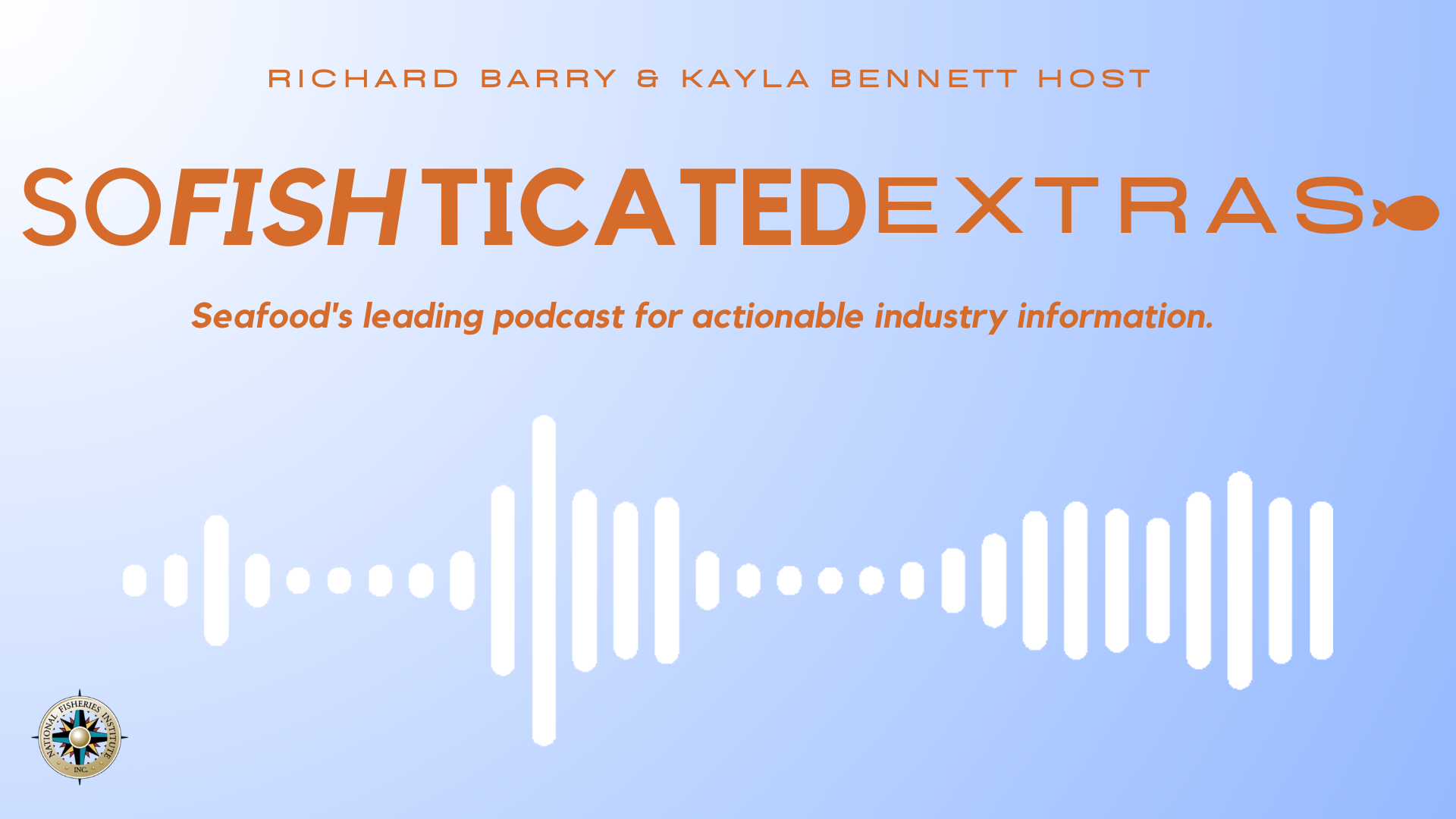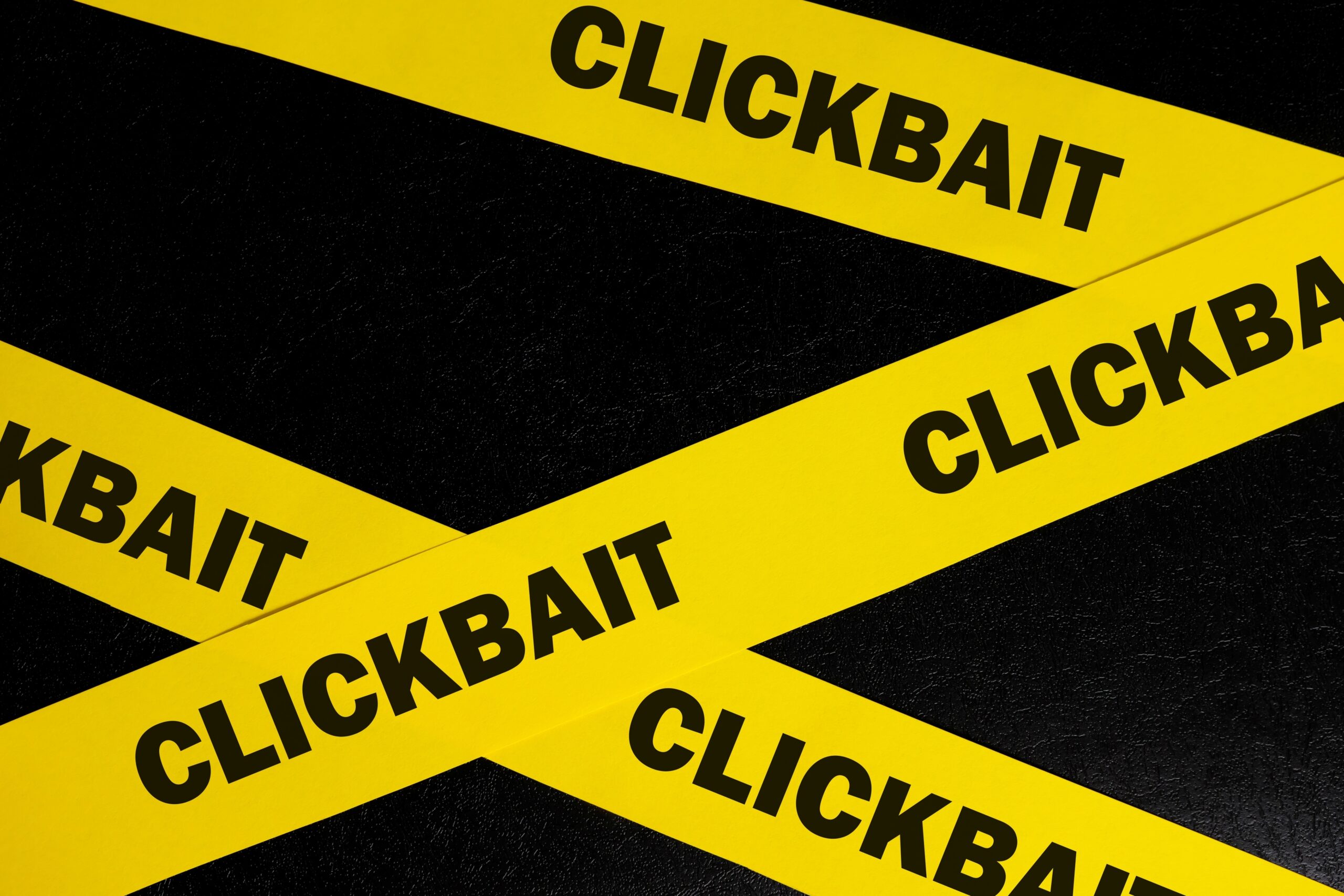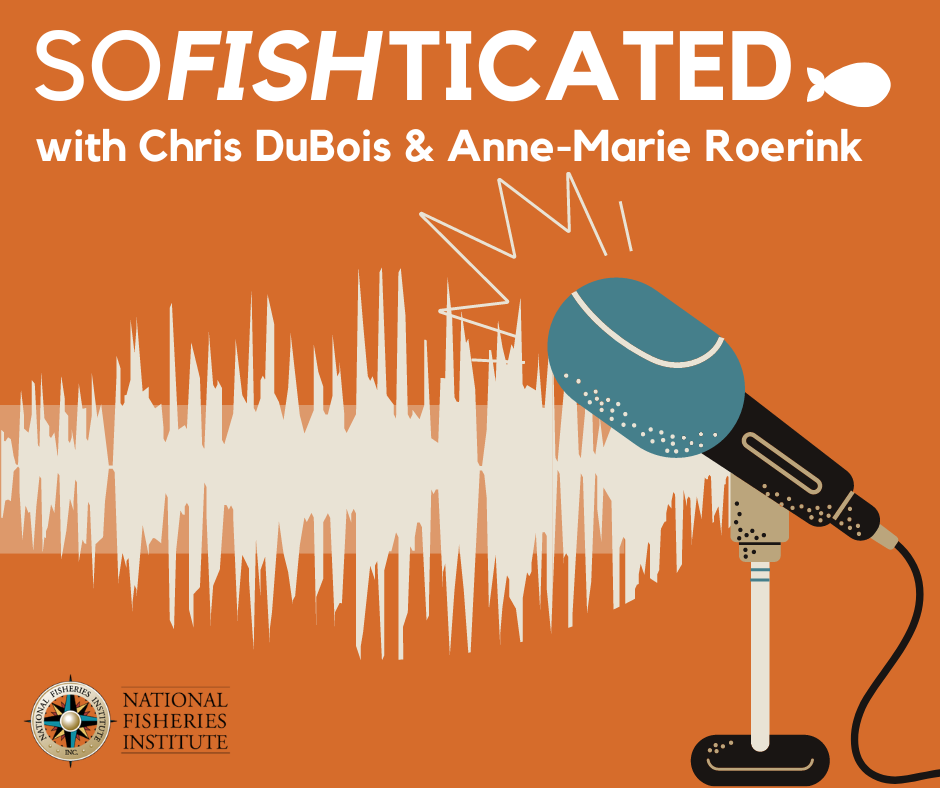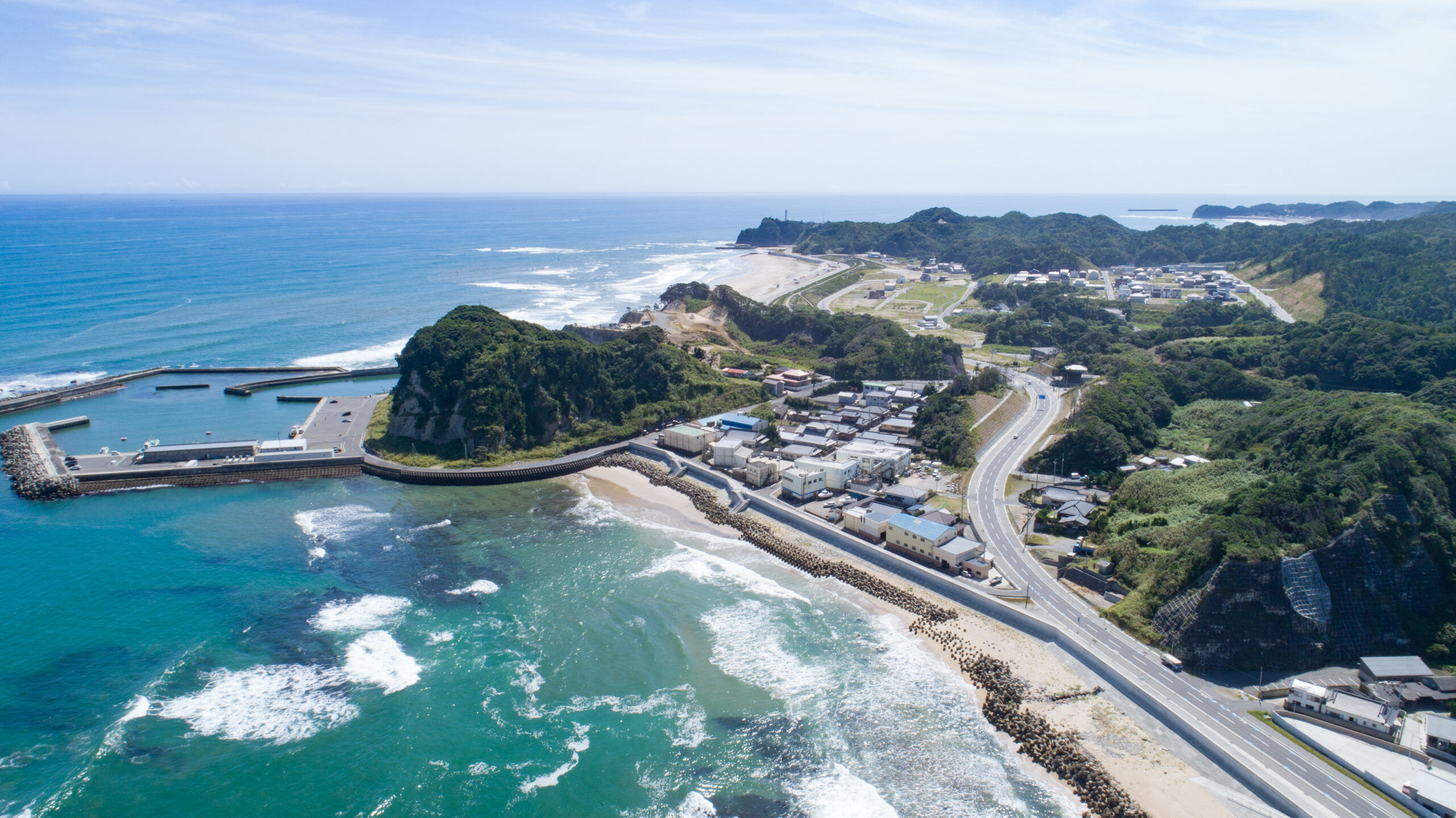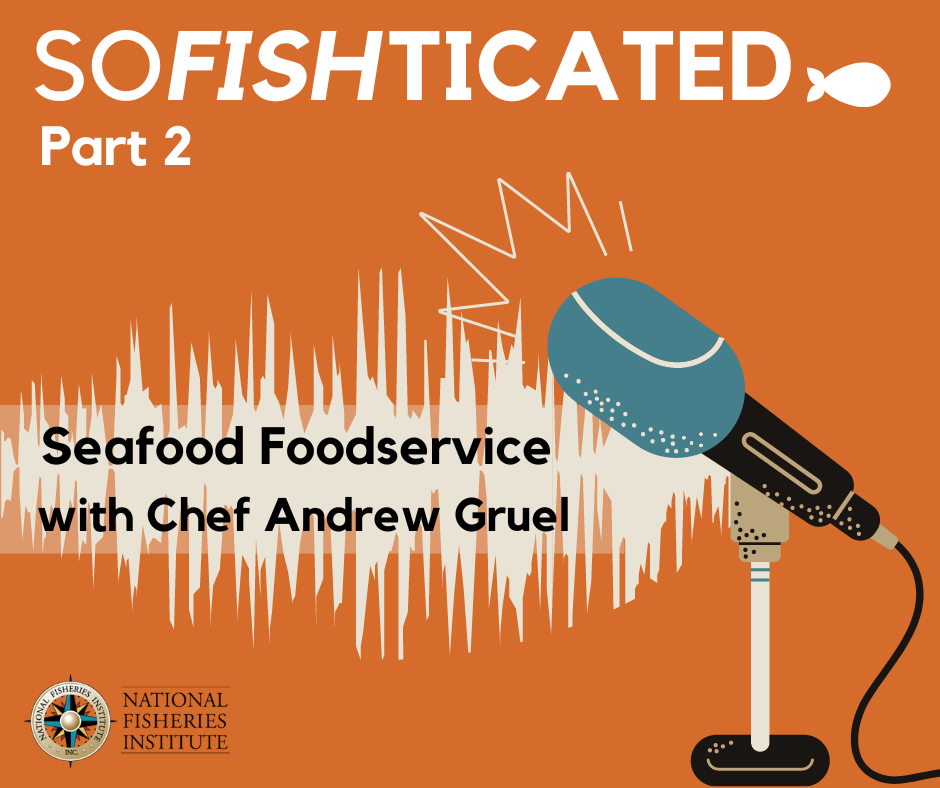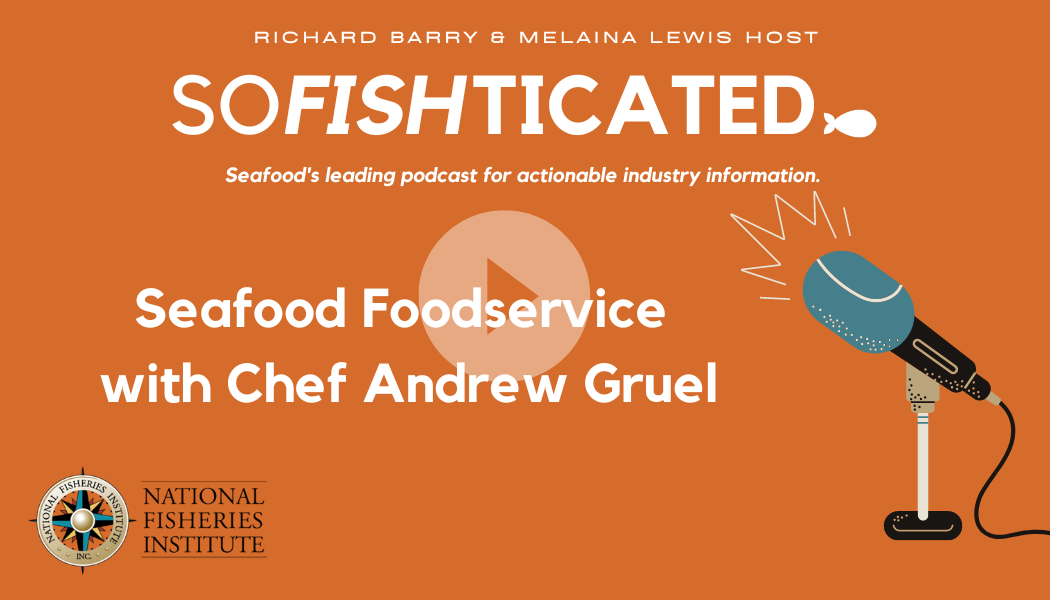All posts by NFI Media
SoFISHticated Extras: Seafood’s Top Line Restaurant News
Top line, there’s still some pressure on seafood sales in foodservice, but it’s actually doing better than seafood at retail, and Chris DuBois of Circana and Anne-Marie Roerink of 210 Analytics break it down in this SoFISHticated Extra.
Tune in as hosts Richard and Kayla ask Chris and Anne-Marie about the restaurant news they’ve heard so far this year.
Latest News
National Fisheries Institute Statement on Misguided Trawl Legislation
Reston, VA – June 3, 2024 – The United States has built a world-renowned fishery management system on regional, science-based oversight and stakeholder collaboration. The success of this system is beyond dispute.
Rep. Mary Peltola’s “Bottom Trawl Clarity Act” flies in the face of decades of scientific understanding and actual outcomes in hundreds of federally managed fisheries. Subjectively walling off areas and imposing static area closures based on ideological hostility to certain harvesting methods is the wrong approach. It will limit the nation’s flexibility to manage fisheries based on the best available science and, in the process, will threaten a significant number of jobs in seafood harvesting and processing, many of them in remote Alaska communities.
Congress should not take up this flawed legislation.
Lisa Wallenda Picard
President & CEO
Latest News
Get with the Times
The saying “everything old is new again” speaks to trends that see faded Nirvana and Guns N’ Roses concert tees flying off the shelves and quickly affixed to a generation of teens who’ve likely never listened to either. It’s a thing. It’s a statement. It’s a celebration of vintage coolness. But it’s not a trend that should be embraced by journalists in their current reporting.
A recent New York Times article about shrimp dug deep into outdated postures about seafood apparently in order to recycle hyperbole. Unable to ignore the FDA calling shrimp a “best choice”, the article searches far and wide for “health downsides” and comes up with the admonition that people who have “sulfite or phosphate sensitivities may want to avoid” some shrimp. Ahhh yes, the immense sulfite and phosphate sensitive community thanks the Old Gray Lady for sounding the alarm.
Retreading the many times disproven mercury myth, the article wonders aloud if the chemical element could be present in shrimp. It even employes an expert biologist from exotic Spain to tell readers there’s “no excessive risk.” Narrowly avoiding the type of embarrassing pronouncements and prognostications published by Consumer Reports only five months before.
Taking aim at “antibiotics in imported shrimp”, the Times asks an expert from Louisiana about the issue. Keep in mind Louisiana is the epicenter of anti-imported shrimp activism. The paper could have asked any toxicologist from a reputable university, who was familiar with the topic, but they chose Louisiana. Despite the rather apparent set up, the expert finds no “grave health risk” associated with the concerns raised.
With an eye towards a much-needed green angle, the report wrings its proverbial hands about coastal habitats, pollution, and an “enormous ecological price” by citing previous Times stories from 2003, 2008 and 2012. Keeping in lock step with the “everything old is new again” mantra.
Like any food farmed or caught to feed a growing planet, shrimp production has an impact. It has aspects where it could use improvement and it has facets where it excels. Articles that try to revive outdated concerns with little to no new reporting are not cool and vintage, they’re awkward and tiresome.
Latest News
SoFISHticated: A Seafood at Retail Reckoning?
Latest News
Make Sure You’ve Got the Facts on Fukushima
Seafood from the Pacific Ocean remains safe, healthy, and delicious. Recent reporting on the controlled release of treated water from the Fukushima power plant has vacillated between highly accurate and highly hyperbolic. The International Atomic Energy Agency (IAEA) has also concluded that the release would have a “negligible” impact on people and the environment.
Reporting explains that the water being released contains about 63 becquerels of tritium per liter (that’s a unit of radioactivity.) The World Health Organization’s limit for drinking water is 10,000 becquerels per liter.
For perspective, Geraldine Thomas, a molecular pathologist formerly of London’s Imperial College, is quoted as saying, “There are not going to be any health effects… There is no scientific reason to ban imports of Japanese food whatsoever.”
For more information visit FukushimaFishFacts.com
Latest News
NFI Leadership Summit
NFI President & CEO Lisa Wallenda Picard has announced the rebranding of the NFI fall political event with an updated schedule to provide attendees with a series of speakers on business and the geopolitical climate. The “NFI Leadership Summit” will be held Tuesday September 26-28, 2023 at the Intercontinental Wharf Hotel, Washington, DC.
The Political Conference will include select NFI committee and council meetings; and the Executive Committee meetings. Wednesday will include a full day of external meetings with elected officials, regulatory agencies, and embassies. The Board of Directors will meet on Thursday morning.
The NFI Leadership Summit kicks off on Tuesday morning concluding with a luncheon speaker.
Tuesday Speakers:
- Navigating Troubled Waters: The US, China and the Global Seafood Trade, Andrew Browne, The Brunswick Group
- Geopolitical Issues & Potential Impacts on Seafood, Robert DeHaan, NFI
- Attracting Talent to the Seafood Industry & Growing your Workforce, speakers TBA
- Seafood Buying Trends at Food Service & Retail, Robert Goldin, Pentallect
Tuesday afternoon optional events:
- Small group workshops on “Effectively Communicating Your Message to Stakeholders” in preparation for Wednesday external meetings
- Pentagon Tour
- George Washington’s Home at Mount Vernon Tour
Networking events include:
- Tuesday: Michael Lieberman’s Famous Crab Night, FOA & Son (all attendees)
- Wednesday: Happy Hour Tiki TNT Rum Bar -Hosted by Jay Sterne, Windward Strategies
There will be no NFI events on September 25 in recognition of Yom Kippur. Registration will open soon. Watch your email!
NFI’s block of rooms at the Intercontinental Wharf at $399 single/double plus tax. The room cut off is September 2, 2023 or until the room block sells out.
Sponsors: Diversified Communications, FOA & Son and Windward Strategies
Registration is now open!
Contact Hannah Mayers for more information or sponsorship opportunities at hmayers@nfi.org.
Latest News
“Safe Catch”… Like A Bad Penny
For years, gullible media have reported breathlessly on Safe Catch Tuna without doing much homework. Such homework might include a Google search that would turn up posts like:
- “Safe Catch” tuna is here to save you… from what?
- Is Safe Catch Holding Tight To The Mercury Myth?
- More of the Same from Safe Catch
Not surprisingly, they’re at it again. This time it’s the CBS affiliate in San Francisco, and they fall for the whole, scary narrative about protecting people from mercury in canned tuna. But reporter, Brian Hackney, does not mention that the Food and Drug Administration’s (FDA) own Net Effects Report found people can safely consume 164 ounces of canned light tuna and 56 ounces of canned albacore tuna every week. And that’s regular, old canned tuna, not some expensive brand that makes low mercury claims. That’s as many as 41 tuna sandwiches a week. Hackney may be a tuna sandwich aficionado, as he does offer his own culinary tip at the end of his report, but damn… that’s a lot of sandwiches.
In reality, the story is a retread that’s been produced many, many times. The one piece of new news that Hackney fails to report on is the fact that the Better Business Bureau’s National Advertising Division (NAD) determined some of Safe Catch’s claims needed to be modified or completely discontinued. The NAD said parts of Safe Catch’s advertising promotes the “unsupported and falsely disparaging message that other commercially available brands of tuna use fish that are dangerous.”
Here are the straight facts—people do not suffer “mercury poisoning” from the normal consumption of commercial seafood. Period. Safe Catch often artfully talks about spikes in mercury, but they never put the actual numbers in perspective. The FDA limit for mercury in canned tuna is 1.0ppm. Albacore tuna test results are around 0.3ppm and Light tuna test results are around 0.1ppm. So, could those numbers “spike” to 0.7ppm or 0.4ppm? Sure, but they’re still totally safe to consume.
Oh, and one other thing. The FDA’s limit for mercury in fish includes a ten-fold safety factor built in. Making the actual level of concern 10.0ppm.
So, if Brian Hackney or any reporter wants to follow up with the facts. We stand at the ready.
Latest News
IUU Technology over Treachery? Or Not Really… But Just Kind of a Cool Story with a Helicopter Chase?
Today’s Washington Post article, ‘A boat went dark. Finding it could help save the world’s fish’, follows a structure and narrative that illustrates a global Illegal, Unregulated and Unreported (IUU) fishing problem and then offers a technological solution involving data mining, in this case, vessel monitoring data from Global Fishing Watch.

Ironically, the article’s only illustration of active IUU fishing being foiled comes from an impressive set of moving graphics and a gripping 450-word tale of a vessel named the Oyang 77. But the high seas narrative, complete with a helicopter chase, ends quietly with this important quote, “Global Fishing Watch’s data did not help catch the Oyang 77.” So… yeah, there’s that.
What’s more, the most telling quote from Global Fishing Watch is one that actually thoroughly undercuts the pre-determined conclusion that commercial fishing is rife with IUU behavior, and that this technology is the fix.
“We thought we might have a pure illegal fishing story,” said Heather Welch, a NOAA affiliate and marine biologist at UC Santa Cruz, who led the research with Global Fishing Watch. “And it became very clear that that’s not fair to the fishermen, that that’s not the story we’re seeing here.”
IUU fishing is something that stakeholders and governments alike are working hard to eradicate. These reports continue to remind us of the work being done and the work that’s left to do. But broad-brush proclamations about the high seas being the unregulated wild west are inaccurate hyperbole that border on click bait.
NFI supports effective methods to combat the illegal fishing that does exist. NFI encourages regulators to move away from ineffective means, such as the Seafood Import Monitoring Program (SIMP), to initiatives, such as the biennial IUU fishing report, that have a chance of actually doing some good.
Latest News
Chef Gruel Discusses Whether Seafood Restaurants are Thriving or Surviving
Chef Andrew Gruel returns to SoFISHticated to explain whether seafood restaurants are surviving or thriving. He provides a primer on how to navigate barriers in full-service seafood and ways to plan for long-term success.
Key takeaways:
- Will seafood fast causal ever have its moment or is it an operational venue that’s just not meant to be?
- Seafood experienced a boom in retail during the last three years. Is the scale now realigning with more business shifting back into restaurants?
- What’s the role, if any, for third-party certifications in seafood foodservice? Chef Gruel explains.
Latest News
Part 1: SoFISHticated Podcast: Chef Andrew Gruel Discusses What it Takes to Run a Seafood Restaurant
American chef, television personality, and seafood junkie, Chef Andrew Gruel, joins SoFISHticated to explain to seafood processors and producers what it takes to run a full-service seafood restaurant in today’s operational landscape. The recipe calls for a dollop of trust and a skosh of psychology, but you won’t need a PhD.
Key takeaways:?
- Where do seafood processors and producers fit into the foodservice landscape? What are chefs and restaurant owners looking for in their value chain partnerships?
- What do point of purchase materials and restaurant menus have in common?
- What’s the benefit of using a menu approach that features both wild caught and farmed products for the same species?
